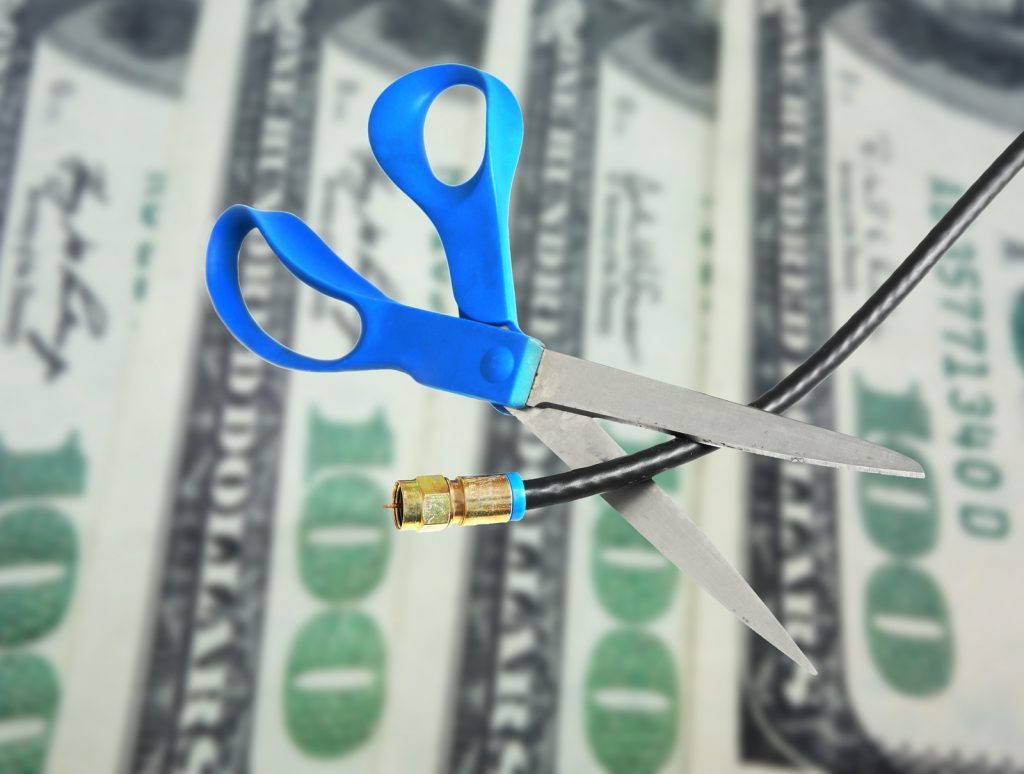
I’m a television addict. Whether it’s “The Walking Dead,” “Game of Thrones” or old episodes of “Rock of Love” (don’t judge me), I watch everything. But after getting married, my husband and I were looking to cut corners to boost our house fund, and our cable bill had reached ridiculous proportions. It was higher than my student loan payments.
I kicked and screamed at the idea of giving up my favorite programs, but looking at how much I spent on television in one year made me nauseous. We slowly cut back on our cable subscription until I eliminated it completely. At the end, I didn’t miss it at all, and we saved more than $1,000 the first year.
The cost of cable television is steep; for many people, it can be as much as a car payment. Over the past few years, cable costs have risen steadily by about 8% with a national average bill of $99 a month. Add on premium channels like HBO or Showtime, and your contract can run up to $300 a month or more.
If you’re willing to give up immediate access to “Monday Night Football” and “Fixer Upper,” you can save a lot of money. Put that $99 into a savings account, make extra payments toward your student loans or increase your 401(k) contribution. This simple lifestyle change can help you save thousands over time.
However, if you’re used to premium cable and all of the big-name shows like “Game of Thrones,” making the transition can be tricky. More than 80% of households still pay for cable, so it’s easy to experience cable withdrawal when you consider making the change.
But eliminating cable doesn’t mean you have to give up watching television for entertainment. Here are four cost-effective cable alternatives that will help you when you cut the cord:
Finding alternatives to cable:
- Invest in an antenna: While you might have flashbacks to your grandparents’ rabbit-ears, modern antennas are sleeker and more effective. By adding an antenna to your unit, you can access local news and public television stations. You can get a good antenna for less than $20 and enjoy basic access to ABC, NBC or other stations and watch syndicated shows.
- Choose a subscription: If you love movies or binge-watching shows, a streaming subscription can be a great cable alternative. A Netflix membership costs $8 a month and you get access to thousands of movies and television shows, including both classics and new releases. If you want to catch up on shows like “Boardwalk Empire,” “Ballers” or want to binge on “The Wire,” you can subscribe to HBO Go for just $14.99 a month, much less than the standard cable package that includes channels you never watch.
- Check out hardware: Roku and Amazon Fire TV are two of the most popular hardware options for streaming, costing $50 to $150, depending on your interests. Simply plug the attachment into your television, and you get access to hundreds of shows, movies and games, like Minecraft and Lego Star Wars. These hardware options tend to have more original programming and new releases, such as “Transparent” and “Tumble Leaf,” and are continually updated.
- Don’t forget the internet: Many stations offer free streaming services of top shows a day or two after their original air date; that’s where I catch up on episodes I missed of the “Walking Dead” on AMC. As long as you can avoid spoilers until you get a chance to catch up, you are good to go. YouTube is also a great resource for older shows and classic movies.
Do the math and compare the cost of subscriptions and hardware to see what makes sense for you. If you only have one or two favorite shows and do not mind watching slightly older movies rather than new releases on cable, you can get by spending just $10 to $15 a month, a significant savings. By selecting the options that work best for you, you can tailor your viewing—and your budget—to your needs.